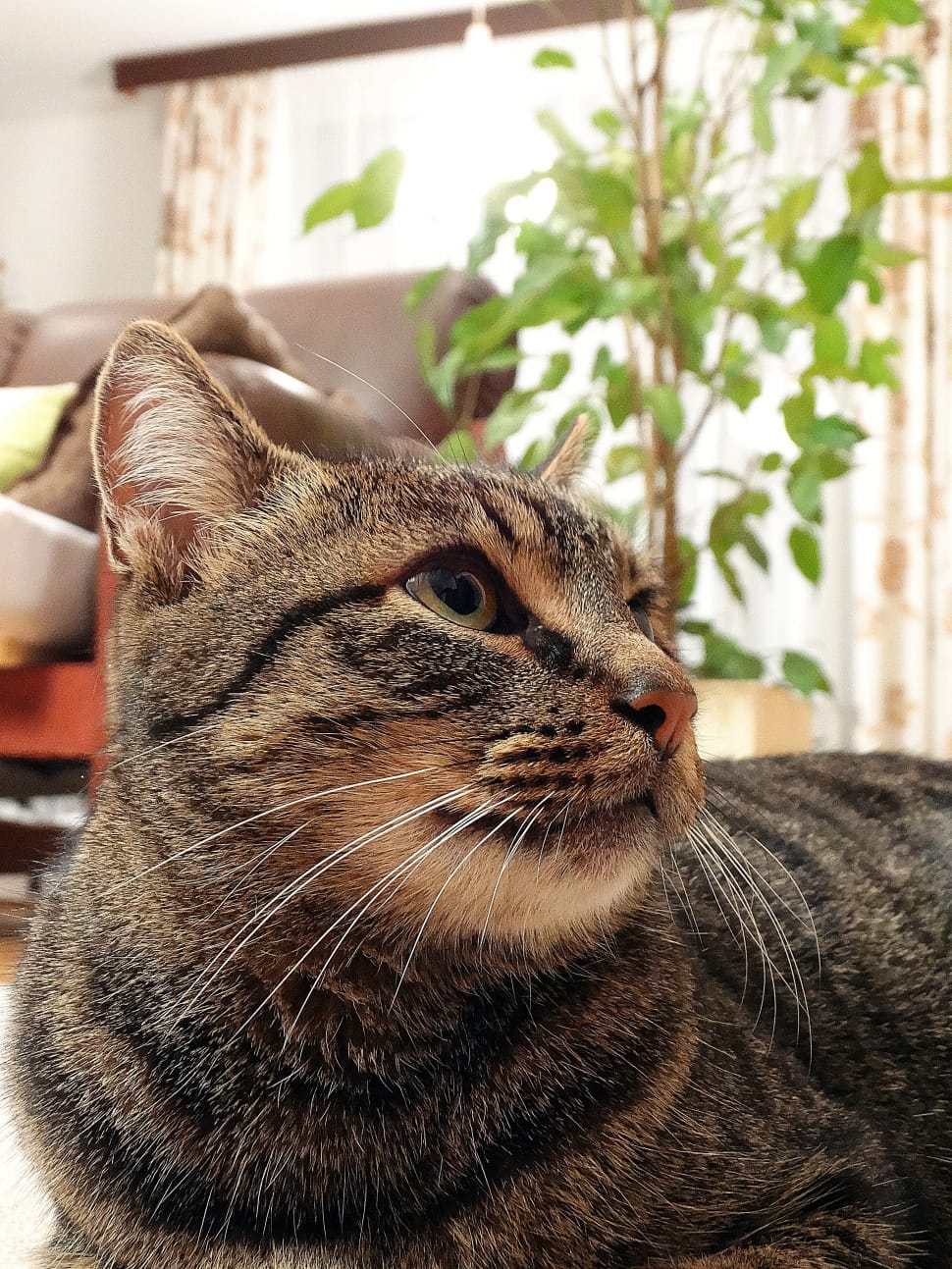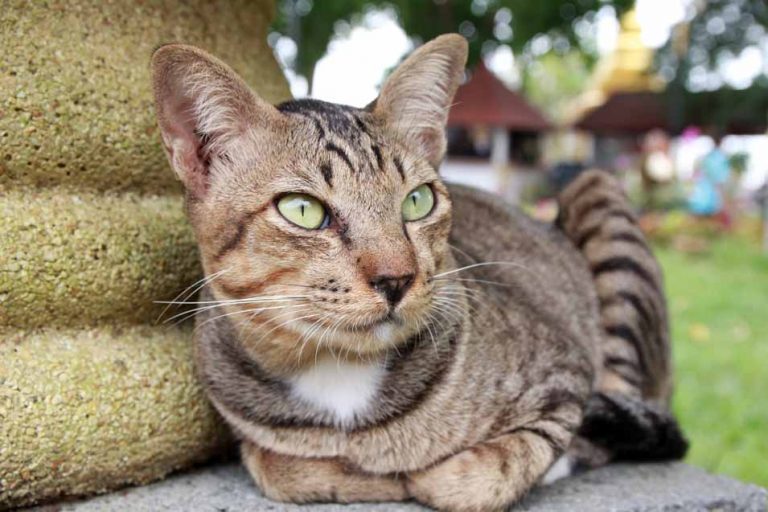

The gene responsible for the coloring of a classic tabby is recessive. The legs, tail, and cheeks of a classic tabby have thick stripes, bands, and/or bars. Classic tabbies each have a light-colored "butterfly" pattern on the shoulders and three thin stripes (the center stripe being the darkest) running along the spine. Black tabbies generally have dark browns, olives, and ochres that stand out more against their black colors. 80% of modern-day cats have the recessive allele responsible for the classic pattern. The classic tabby, also known as blotched tabby, has the 'M' pattern on the forehead but, rather than primarily thin stripes or spots, the body markings are thick curving bands in whorls or a swirled pattern, with a distinctive mark on each side of the body resembling a bullseye. The dark lines on a Mackerel tabby's cheek Classic (blotched) tabby The four known distinct patterns, each having a sound genetic explanation, are the mackerel, classic, ticked and spotted tabby patterns. The notion that tabby indicates a female cat may be due to the feminine proper name Tabby as a nickname of " Tabitha". Use of the term tabby cat for a cat with a striped coat began in the 1690s and was shortened to tabby in 1774. Tabby is also comparable to the Spanish word ataviar, which means "to decorate or to dress or wear" and often implies luxurious clothing. Such silk cloth became popular in the Muslim world and spread to England, where the word "tabby" became commonly used in the 17th and 18th centuries. This word is a reference to the Attabiya district of Baghdad, noted for its striped cloth and silk itself named after the Umayyad Governor of Mecca Attab ibn Asid. The English term tabby originally referred to "striped silk taffeta," from the French word tabis, meaning "a rich watered silk." This can be further traced to the Middle French atabis (14th century), which stemmed from the Arabic term عتابية / ʿattābiyya.


One genetic study of domestic cats found at least five founders. The tabby pattern occurs naturally and is connected both to the coat of the domestic cat's direct ancestor and to those of their close relatives: the African wildcat ( Felis lybica lybica), the European wildcat ( Felis silvestris) and the Asiatic wildcat ( Felis lybica ornata), all of which have similar coats, both by pattern and coloration. The tabby pattern is found in many official cat breeds and is a hallmark of the landrace extremely common among the general population of cats around the world. "Tabby" is not a breed of cat, but a coat type seen in almost all genetic lines of domestic cats, regardless of breed. It is thought that the tabby pattern originates from the numerous related species of wildcat.Ī tabby is any domestic cat ( Felis catus) with a distinctive 'M'-shaped marking on its forehead stripes by its eyes and across its cheeks, along its back, and around its legs and tail and (differing by tabby type), characteristic striped, dotted, lined, flecked, banded, or swirled patterns on the body-neck, shoulders, sides, flanks, chest, and abdomen.

A European wildcat ( Felis silvestris) bearing a similar coat pattern to that of a tabby cat.


 0 kommentar(er)
0 kommentar(er)
